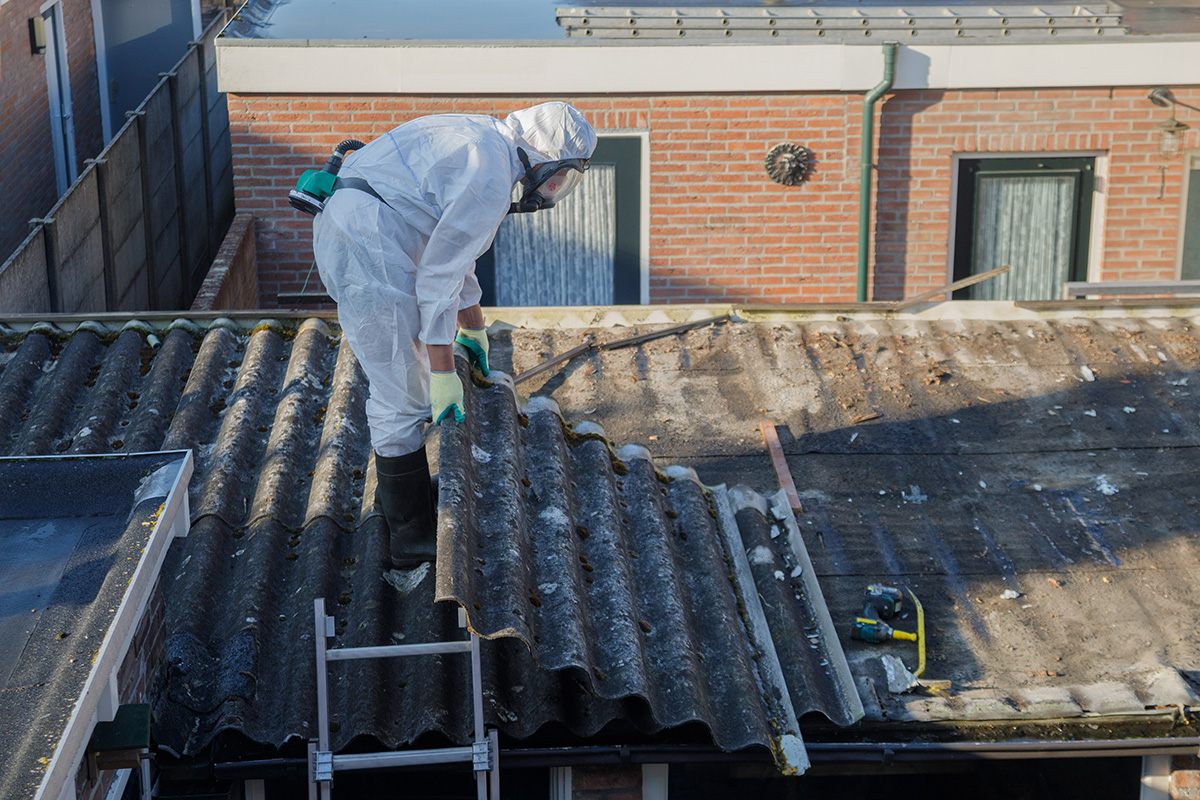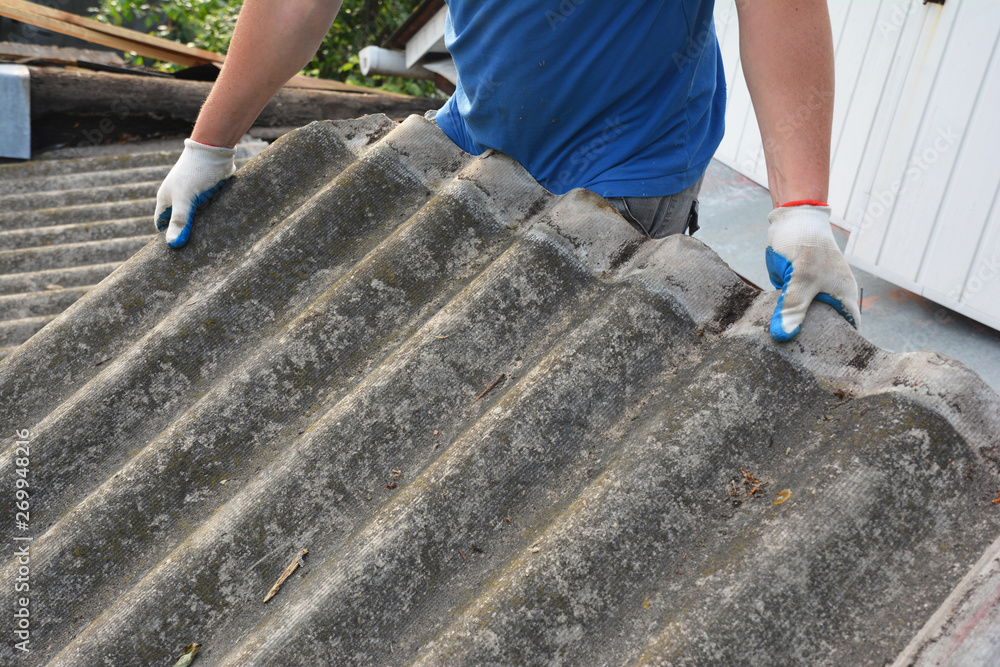Environmental Restoration After Asbestos Removal Cost Guide For Asbestos Removal
Environmental Restoration After Asbestos Removal Cost Guide For Asbestos Removal
Blog Article
Choosing The Right Method For Asbestos Roof Removal Best & Cheap Removal Services Available
Asbestos risk assessment is a critical process for ensuring the safety and health of people exposed to this hazardous material. Asbestos, once generally utilized in construction and insulation products, poses extreme health risks, including lung cancer, mesothelioma, and asbestosis. Given its widespread historic use, understanding asbestos risk assessment is important for owners, property managers, and development professionals.
The preliminary part of asbestos risk assessment sometimes involves identifying potential asbestos-containing materials (ACMs) in a building. This involves an intensive inspection, typically carried out by licensed professionals educated in recognizing and sampling materials that will comprise asbestos. Inspectors give attention to areas such as insulation, floor tiles, textured paints, and roofing materials, that are traditionally identified for asbestos use.
Safe Asbestos Roof Removal Techniques Removal Of Asbestos Roof In Area

Once potential ACMs are recognized, samples are collected for laboratory analysis. This step is crucial since not all materials that look much like asbestos are literally dangerous. The evaluation is carried out to determine the presence and focus of asbestos fibers. These laboratory results guide subsequent actions regarding management and abatement.
Risk assessment also contains evaluating the condition of any recognized asbestos materials. Damaged or deteriorating ACMs are more hazardous because of the increased chance of fiber launch into the air. Professionals study the extent of injury and the potential for exposure based on the material’s location and situation. This assessment informs the risk stage posed to occupants and workers in proximity to the identified materials.
An integral a part of the assessment is considering the placement of the ACMs. Materials in high-traffic areas might current higher risk due to the potential for disturbance. Likewise, materials utilized in ventilated areas might release more fibers if disturbed, rising the danger of inhalation. The evaluation also contains assessing who may be uncovered and under what circumstances they may come into contact with dangerous asbestos fibers.
Successful Asbestos Roof Removal Stories Removal Of Asbestos Roof In Area
Determining the time frame of exposure is one other key facet of asbestos risk assessment. Short-term exposure might carry decrease risks compared to long-term or repeated exposure. Although even brief encounters with excessive levels of asbestos may be harmful, understanding these nuances helps in precisely assessing the danger to people over time.
Recommendations are then formed based mostly on the findings of the danger assessment. If the assessment identifies significant hazards, options might embody monitoring, encapsulation, or removal of the ACMs. Each option presents its own set of considerations, including cost, disruption, and long-term safety.
Regular monitoring and periodic assessments could be essential in some cases. This is as a outcome of circumstances in a building can change over time, doubtlessly affecting the safety of ACMs. These ongoing evaluations make sure that any new risks are identified promptly, allowing for immediate corrective measures if needed.
Documentation performs a big role in asbestos risk assessment. All findings, recommendations, and actions taken should be meticulously recorded for legal and compliance causes. Record-keeping provides a transparent history of the chance assessment process, which is essential for informing future assessments and making certain safety regulations are adopted.
Asbestos Roof Removal Machinery And Tools Hazardous Materials & Disposal Services
Compliance with native and federal regulations is another crucial consideration in the assessment process. Different jurisdictions may have specific laws governing asbestos handling and risk assessment. Stakeholders have to be acquainted with and adhere to those regulations to make sure the safety of public health and keep away from potential legal penalties.
Public training about asbestos risks is significant as properly. Many people stay unaware of the hazards related to asbestos exposure and the importance of correct assessments. Community awareness can encourage motion, encouraging property owners to conduct assessments and take needed precautions, thereby decreasing the general risk of exposure.
In conclusion, asbestos risk assessment is an important practice for figuring out and mitigating the hazards posed by asbestos in varied environments. The process encompasses thorough inspections, laboratory analysis, situation evaluations, and compliance with regulations. Through effective risk assessment, it is possible to safeguard public health, making it imperative for homeowners and professionals alike to prioritize these evaluations in properties potentially containing asbestos.
Post Asbestos Roof Removal Cleaning Asbestos Storm Damage Services
- Identification of asbestos-containing materials (ACMs) in buildings by way of thorough inspections and sampling techniques.
- Evaluation of the situation and extent of injury to ACMs, contributing to understanding the urgency of risk management.
- Assessment of exposure risks for various occupation teams working in or close to asbestos websites, together with maintenance and construction personnel.
- Implementation of legal and regulatory requirements, guaranteeing adherence to native and national safety standards regarding asbestos dealing with.
- Development of a tailor-made asbestos management plan, outlining steps for monitoring, maintenance, and potential removal of ACMs.
- Training and education schemes for workers on asbestos hazards and safe work practices to minimize exposure.
- Regular re-evaluations of asbestos conditions to account for adjustments within the building environment or occupancy ranges.
- Use of risk communication strategies to inform stakeholders about asbestos presence, risks, and management activities.
- Collaboration with health professionals to watch any health effects on staff potentially uncovered to asbestos fibers.
- Establishment of emergency response plans for asbestos-related a fantastic read incidents to successfully manage her response exposure risks and guarantee safety.
What is asbestos risk assessment?
Asbestos risk assessment is the method of evaluating the potential hazards posed by asbestos materials in a building. This assessment helps identify the presence of asbestos, evaluate its situation, and decide the extent of risk to occupants and workers, guiding needed actions for management or removal.
Why is an asbestos risk assessment necessary?
Asbestos Risk Assessment For Roofing Cost To Remove Asbestos Garage
An asbestos risk assessment is important to protect the health and safety of individuals who may be exposed to asbestos fibers - Impact Of Asbestos On Property Value In Sydney. It helps identify areas where asbestos is present, assess the risk of exposure, and implement applicable control measures to mitigate these risks, ensuring compliance with legal regulations
How often ought to an asbestos risk assessment be conducted?

It is recommended to conduct an asbestos risk assessment each three years or whenever important changes occur within the building environment, similar to renovations or changes in occupancy. Regular reassessment ensures that any modifications in asbestos condition or risk exposure are promptly recognized and addressed.
Who should conduct the asbestos risk assessment? (Evaluating Contractors For Asbestos Roof Services)
Asbestos Roof Removal Best Contractors In Sydney Removal Of Asbestos Roof In Area
The assessment ought to be carried out by a qualified and licensed asbestos professional with expertise in figuring out and managing asbestos-containing materials. This ensures that the assessment is thorough, accurate, and compliant with local regulations and safety guidelines.

What occurs if asbestos is found in the course of the risk assessment?
If asbestos is found, the certified professional will advise on the best plan of action, which can include leaving it undisturbed whether it is in good condition, encapsulating it, or safely removing it. Ongoing monitoring and management plans will usually be established to ensure safety.
Can I perform an asbestos risk assessment myself? - Handling Asbestos Shingles And Tiles Safely
Diy Asbestos Roof Removal Considerations Video Guides For Safe Removal
While some preliminary assessments could be made by people who are knowledgeable about asbestos, it is strongly beneficial to rent a certified professional for a complete risk assessment. Professionals have the correct training and instruments to accurately identify and consider asbestos risks.
What are the potential health risks of asbestos exposure?
Asbestos exposure can lead to critical health points, together with asbestosis, lung cancer, and mesothelioma. These situations often develop after prolonged exposure, making it crucial to evaluate and manage asbestos risks diligently to guard public health.
Regulatory Updates For Asbestos Roof Removal Hazardous Materials & Disposal Services
Are there regulations concerning asbestos risk assessments?
Yes, many countries have specific regulations governing asbestos management, including the requirement for normal risk assessments in industrial buildings and sure residential structures. Compliance with these regulations is obligatory to ensure safety and avoid legal repercussions.
What ought to I do if I suspect asbestos in my home?
Asbestos Roof Removal Timeline In Sydney Cost To Remove Asbestos Garage
If you think you studied the presence of asbestos in your house, don't disturb the material. Contact a licensed asbestos professional to conduct a risk assessment and determine one of the best plan of action to administer or take away the asbestos safely.
Report this page